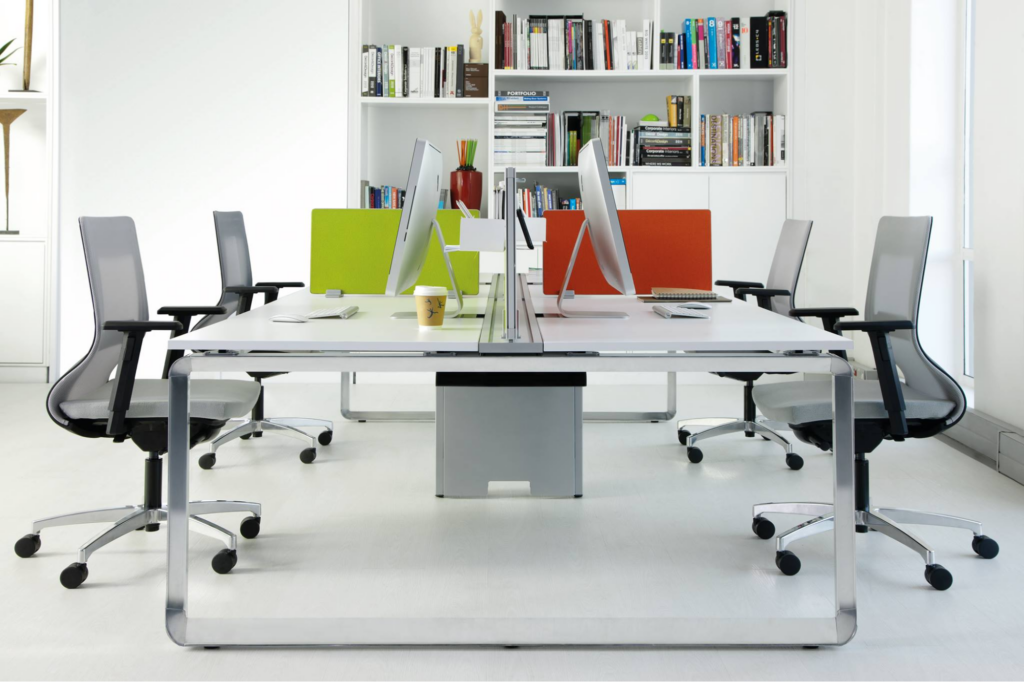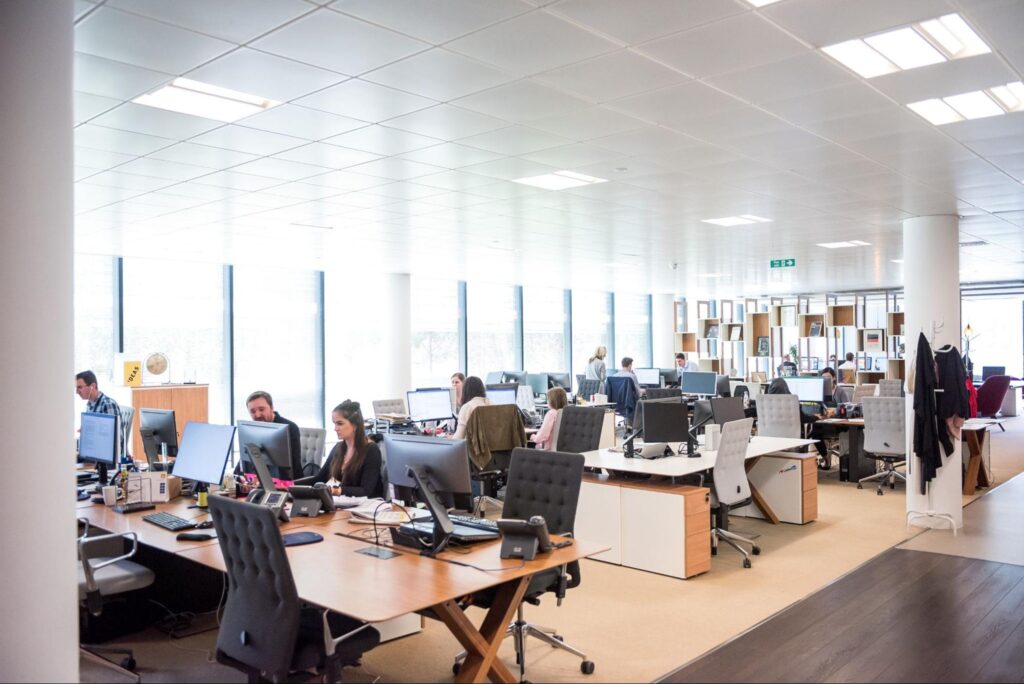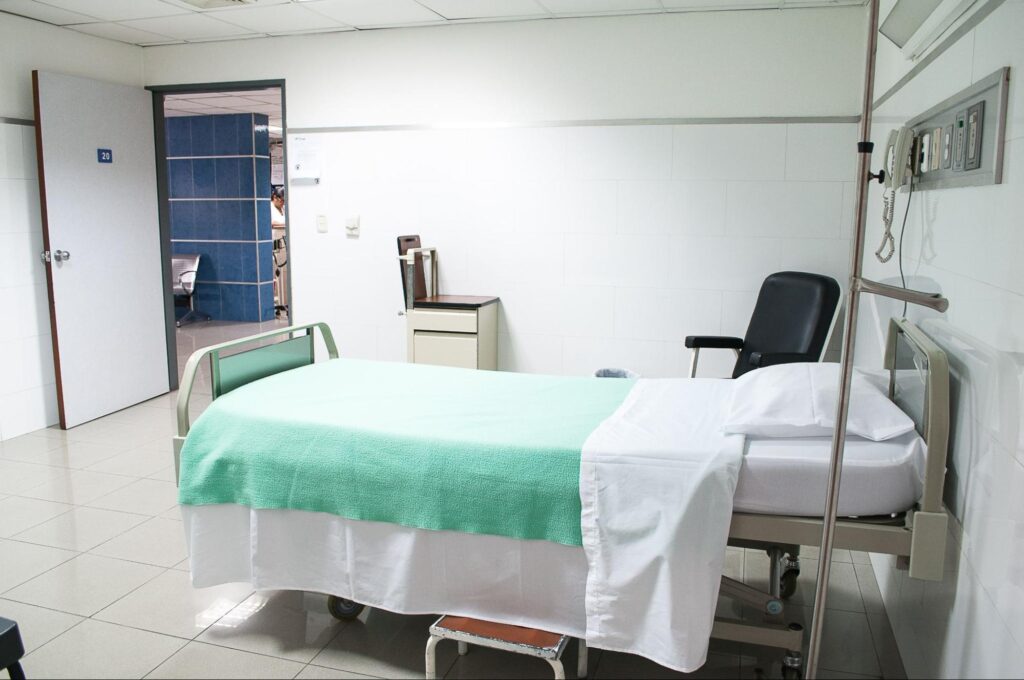When brainstorming what the perfect workplace design would look like, what comes to mind? Is it new desk chairs, new computers, maybe new tables? Or is it new conference rooms, a coffee bar, and more sunlight?
When thinking about your workplace design, it’s important to keep in mind elements that would stimulate employees instead of making them unhappy and bored. There’s a huge difference between having the scenery of beige walls and natural sunlight mixed in with collaborative spaces and fun furniture.
The way your office is laid out can make or break your business, which is why it’s important to plan out the design thoughtfully and to understand why that’s important. Pacificprime.sg does a great job highlighting some of the advantages of workplace design that we’ll be going over, such as increased employee satisfaction, effective use of floor space, better productivity, and even attracting future candidates to work there.

People got used to remote working ever since the pandemic, and they even prefer remote or hybrid working to going into the office now. But why is that? Usually, if people like a place, whether that’s home, work, a friend's house, etc, they’ll try to spend the majority of their time there. So if an office space is old and boring with not a lot of good elements going for it, people will hate going there. People love a positive and uplifting environment full of happy, positive colleagues to share it with.

Businesses are paying attention not only to their employees’ happiness but also overall well-being when thinking about workplace design. Humanyze brings up several valuable points for how and why employee well-being should be taken into consideration, starting with the fact that it has become very important to employees to not be sitting at their desks all day and all week anymore. Doing so decreases opportunities to get up and walk around and have any form of break or exercise.
That’s why it’s important to have an office design that can let them get up and take breaks in a good environment to do so in. Elements like sit-stand desks, staircases, lounges, and things like that can facilitate movement and can make taking breaks or simply walking through the office more enjoyable too. The incorporation of nature can help boost employee well-being as well. Having some plants scattered around the office, fresh air, and especially natural sunlight puts employees in a much better mood than staring at blank beige walls, cubicles, and a computer screen.
The happier workers are, the more productive they’ll be. Officespacesoftware.com shows several studies that support this idea, and the reasons why employees are more productive. These surveys show that when put in stimulating environments, employees are less likely to take sick days, are more engaged, and are healthier. And even better, businesses are happier because it’s costing them less than when employees take more days off. After all, they don’t like their work environment. It’s a win-win because employees are happy, and businesses make more money from that productivity.

The furniture layout is incredibly important in this because, without a more open layout, like a flex space, it’s harder for cross-team collaboration to happen. Flex spaces are important to multiple different kinds of workplaces including education, healthcare, and especially for hybrid workspaces. In these flex spaces, fewer cubicles are there to separate us from our team members, and fewer walls will separate us from other teams on our floor.
It’s a lot easier for collaboration to happen because you can simply walk over to the other team, and there are a lot more choices for where you want to work. There are more official conference rooms or more casual open areas, and if you want to work in a quiet place because there’s a meeting happening right next to you, there are plenty of areas to choose from too.
Comfortability is important to space functionality as well. If people aren’t comfortable, they won’t want to work there. This includes physical, mental, and even emotional comfort sometimes. Things as simple as comfier chairs, desks, and ways to keep your posture up can help tremendously at work. Also getting enough natural sunlight, and having accessible snacks and drinks, like having a coffee bar nearby helps employees stay productive as well. Plus, if the space promotes healthier and happier people, more people will want to be around those people, so more people will want to come in for work, and more people will want to work for your company! So when employees are happy and comfortable, so are businesses.

Colleagues and teams are usually separated in one way or another from each other in an office space. Either that’s by a cubical or an entire wall. Open layouts get rid of this problem by creating an open and more collaborative environment for colleagues to more easily work together, as well as various teams. These spaces can be created by having lounge spaces, and more common areas.

Workplace design is essential to the success of a business because it makes workers happier and more satisfied, in turn making the whole office more productive. Employees will feel more comfortable and healthier with more opportunities for collaboration, more say in where and how they work, and better overall well-being.
It can be hard to visualize exactly how you want your space, but we have a virtual showroom on our website that you can check out to help with that. There, you will see several elements for design and space planning including where conference rooms, desks, and collaborative spaces are. Designing your office space doesn’t have to be hard, and with the right tools, it can even be enjoyable.
Have you ever been in a situation where you are trying to get work done, but there is just so much noise around you that you can’t fully concentrate? Or do you just not feel like you have speech privacy in your space?
Sound masking is the perfect solution to any environment with noise or speech privacy as an ongoing issue! You might be asking yourself, “What is sound masking? Is it the same thing as noise canceling?” We’ll dive into these very common questions below.

According to Cambridge Sound, Sound masking is the process of adding background sound to reduce noise distractions, protect speech privacy and increase office comfort. The background noise typically is an ambient sound engineered to drown out unwanted sounds and protect speech privacy, which encourages the noise you want to hear, whether that is another person, music, a video, etc., and helps you feel more secure when speaking.
A great example of sound masking noise is when you are doing the dishes and conversing with someone, but the sound of the running water drowns out their voice. Another example could be when you’re walking down the street on a phone call, but a noisy truck drives by, and your voice gets masked over the phone.

Sound masking and noise canceling are not the same, even though many believe they are. Sound masking is the addition of a new noise created to mask unwanted noise, while noise-canceling uses certain technologies to completely cancel out noise without adding new noise. They aim for a similar result but are engineered differently.
People also often ask if sound masking is the same as white noise, which it is not. White noise typically is loud and resembles static of some sort, which can become irritating fairly quickly, while sound masking is meant to mimic human speech frequency, creating a pleasant noise that most people don’t even recognize is being emitted.

In a workplace setting, there is nothing worse than disruptive noise while attempting to get work done, which is why sound masking is the perfect option in a work environment.
When it comes to employees' biggest concerns in the workplace, 28% said excessive noise was their biggest concern, and the other 68% said speech privacy was their main concern. A sound masking system can control both of these typical disruptions in an office, making it a great option for businesses to help employees feel more comfortable. It also has shown that sound masking in the workplace increases productivity by a minimum of 2-4%!
Places in a workplace setting where office sound masking is effective:

Sound masking is the perfect solution to a noisy library or study room by drowning out unwanted distractions. Minimizing distractions in an educational setting is important, as students are less productive in a space with constant interruptions.
Places in an educational setting where sound masking is effective:

Hospitals are another important place to implement sound masking due to high patient volumes and overnight services. A hospital is full of noise, and patients are worried about their privacy, so sound masking is a great solution when helping patients feel safe and comfortable during their stay.
Hospitals with a sound masking system installed give their patients the ability to sleep better and recover more quickly. It also helps enhance patient privacy, which is important in a hospital setting.
Places in a hospital setting where sound masking is effective:
In most instances, sound masking speakers are installed above the ceilings in the space to keep them out of sight and are typically placed 15 feet apart. The exact spacing depends on numerous factors within the space they are being installed, such as ceiling tile thickness, the height of the ceiling, space above the ceiling, etc., and these factors also dictate what frequency and volume of sound is emitted from the sound masking speakers.
These speakers can either be installed facing toward the office space, which is direct sound masking, or facing away from the office space, which is indirect sound masking.
The difference between the two types of sound masking besides the direction of the speakers is that with direct sound masking, there typically is less of a need for tuning of the speakers, while indirect masking usually requires a more intense installation, as the sound is meant to hit above and bounce back towards the space, and tuning is crucial to make sure the noise is pleasant and effective.
Here at Workplace Integration, we specialize in creating workspaces that fit your needs, and if you think a sound masking system would benefit your working environment head to our website now and fill out our inquiry form!